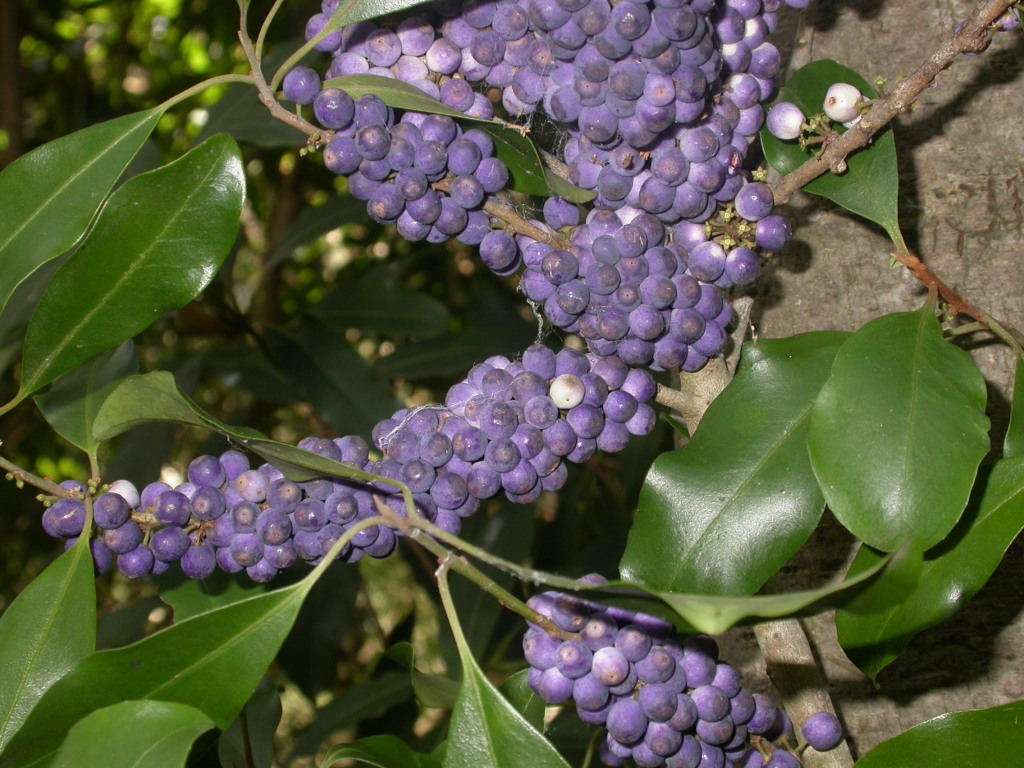Myrsine
Erect shrubs or trees; older stems usually rough from inflorescence and leaf scars; buds with rusty or brownish hairs. Leaves entire, rarely toothed, translucent or coloured dots and/or streaks present. Inflorescence of short axillary clusters borne on short lateral branches or protuberances, usually on old wood below the leaves. Flowers bisexual or unisexual, 4- or 5-merous. Calyx persistent, glandular; corolla usually glandular; staminal filaments very short, inserted at the base of the corolla-lobes; style absent or very short, stigma often short or lobed, sometimes slender and curved (not in Victoria); ovary usually globose, ovules few in 1 series. Fruit globose, slightly fleshy, usually pedicellate, glands usually obvious when immature, 1-seeded.
About 300 species. Almost cosmopolitan through tropical and subtropical regions; at least 15 species in Australia (eastern States only).
Australian members of the genus were formerly treated as a separate genus Rapanea.
 Spinning
Spinning


